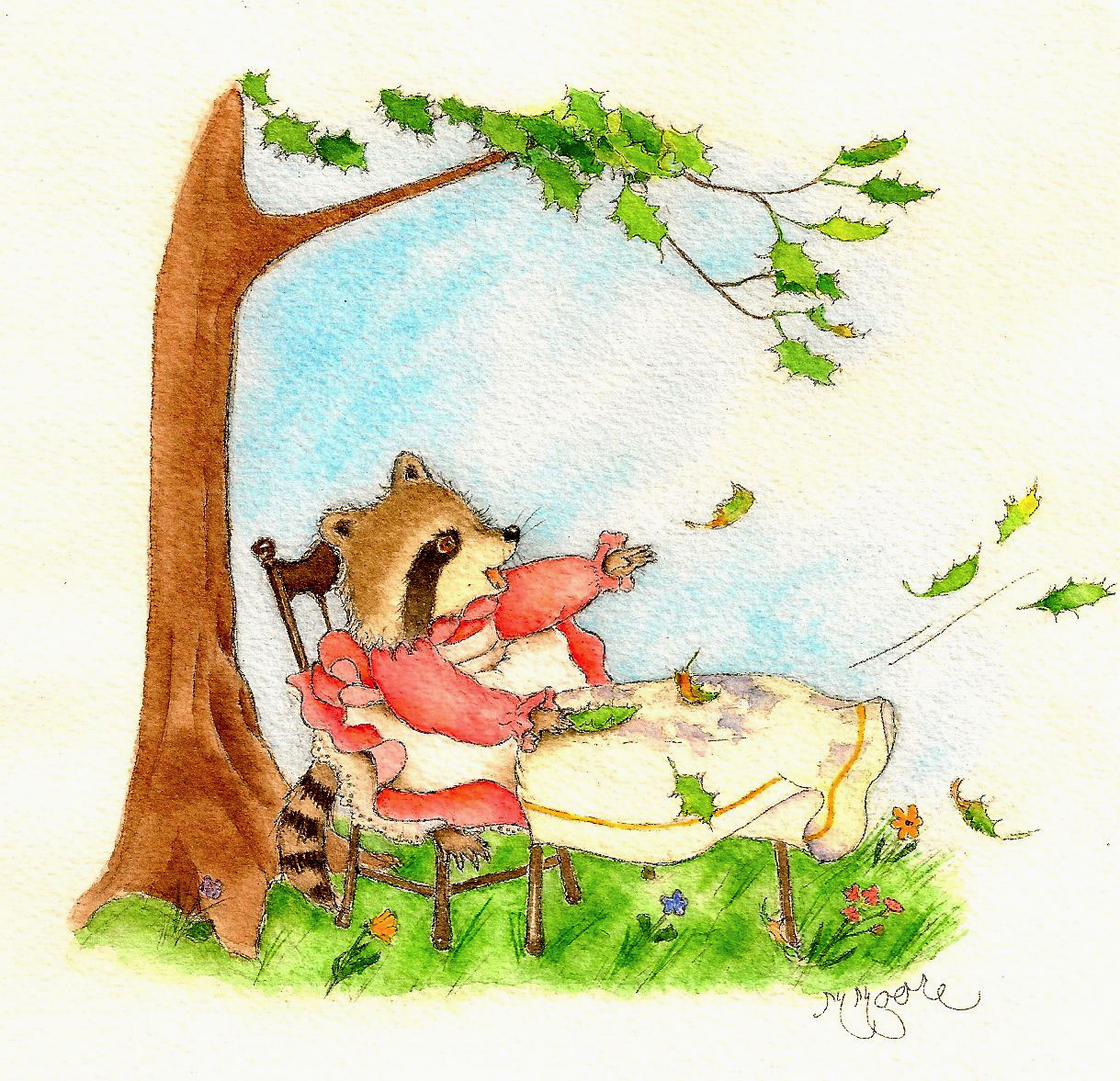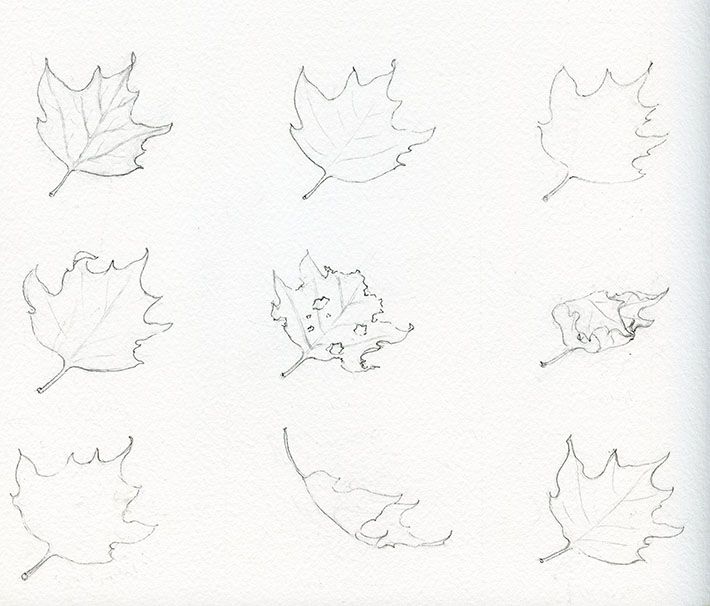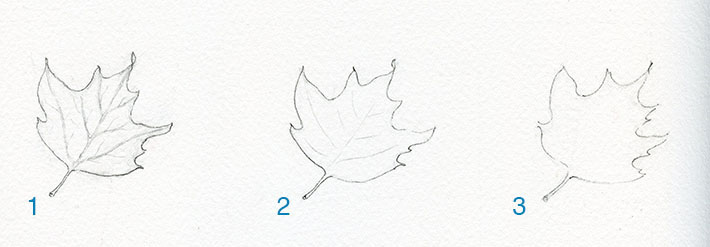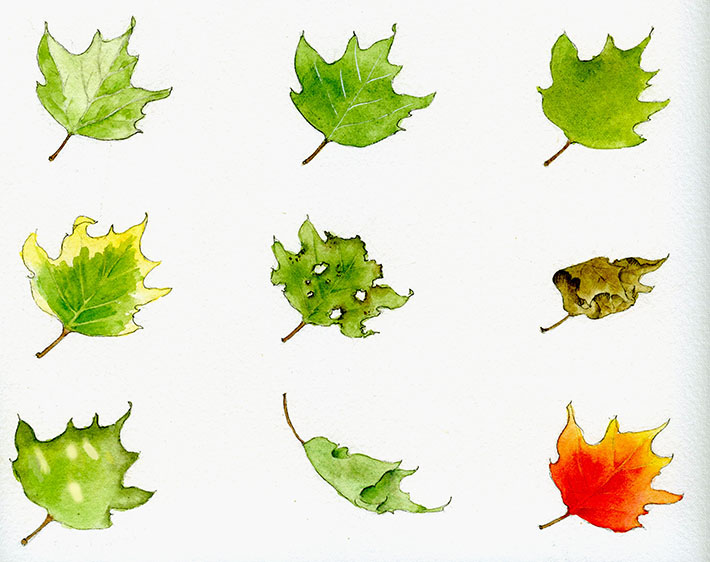The loveliness of leaves is never ending. They are a sure sign that spring is here, they shelter us from sun and rain, give us a measure of a storm’s strength, and bring beauty to our world.
All things considered, leaves are just as versatile for how we choose to use them in our art.
Here are some ideas for choosing how to paint leaves in pieces of art.

I have taken a maple leaf and drawn it in various ways in which it may present itself. If you are feeling extra creative, draw a favorite leaf of your own to follow along.
When I need a specific type of leaf for a piece of art, I try to find the real thing in nature. But if not, there is plenty of reference to be found in books or the internet to get exactly what you need.

Starting with the top row of leaves:
Leaf 1.
This leave will be very detailed. The vein lines are carefully drawn in thin double lines. Most of the painting will occur between these veins so they remain defined and prominent.
Leaf 2.
This is going to be more simplified with simple gouache lines to denote veins.
Leaf 3.
We will keep this leaf very simple. The way you might work it when there are lots of leaves you do not need or want to be very detailed, when you need them to be “quieter” than the main subject of the painting.

The painted versions:
Leaf 1.
I have left a portion unpainted to show that I gave the whole leaf a pale green wash first. For the next layer, I wet the areas (one at a time) between the vein lines and saturated more color in a little unevenly to give it depth. Keep this layer of color close to but off the vein lines. The pale green wash gave the veins enough color to make the leaf a little more realistic.
Leaf 2.
The whole leaf is painted unevenly in one layer and when dried, I painted thin vein lines with white gouache. Pen and ink works good this way, too.
Leaf 3.
Just painted with no detail. Best to keep little detailing on leaves that are background art.

Moving along to the middle row of leaves:
Leaf 4:
Though there is no big difference from the leaves in row 1, the difference will be in how it is painted in a stylized manner.
Leaf 5.
As you can see, this leaf is damaged. There are times when this effect works like when a leaf has an insect on it or maybe even has been chewed by a forest creature.
Leaf 6.
A rolled leaf. It really helps to go out and find a leaf that is actually rolled and bring it in to sketch from. This is a great skill enhancer.

The painted versions:
Leaf 4.
This is a more “painterly” approach. You would use this when you need to really make your leaves stand out in you artwork.
Leaf 5.
For a damaged leaf, brown along the chewed edges and holes bring out this effect. Some simple spots of brown work, too.
Leaf 6.
A nice uneven layer of shades of brown was first applied. Then deep shading where the edges overlap and in the center of the roll. I even added some black ink lines for shading to strengthen the shadows.

For the last row of leaves:
Leaf 7.
Again, this leaf looks like some of the others, but we will use a sun-dappled effect on this leaf.
Leaf 8.
This is a falling or windblown leaf.
Leaf 9.
For our last example, I will paint the leaf as it waves goodbye in a blaze of autumn glory.

The painted versions:
Leaf 7.
This leaf was painted in one layer of color. The sun-dappled effect was made by mixing white gouache with pale yellow and applied in a few short strokes.
Leaf 8.
Again, this leaf was painted in one layer of color and then shaded in the shadowy areas with the same color but with the addition of neutral tint. You can also add a little black or sepia to your green mix for shading as well.
Tip: Neutral tint is a watercolor medium that you can add to any color to tint it darker but keep the same hue.
Leaf 9.
I gave this leaf a wash of the same color as you see, and just intensified it while still wet. Then I went back and saturated a little more in between the vein lines to being out a little detail.

There are many more ways to paint leaves, but I hope these basics give you some great ideas as you create your art!


Good article!